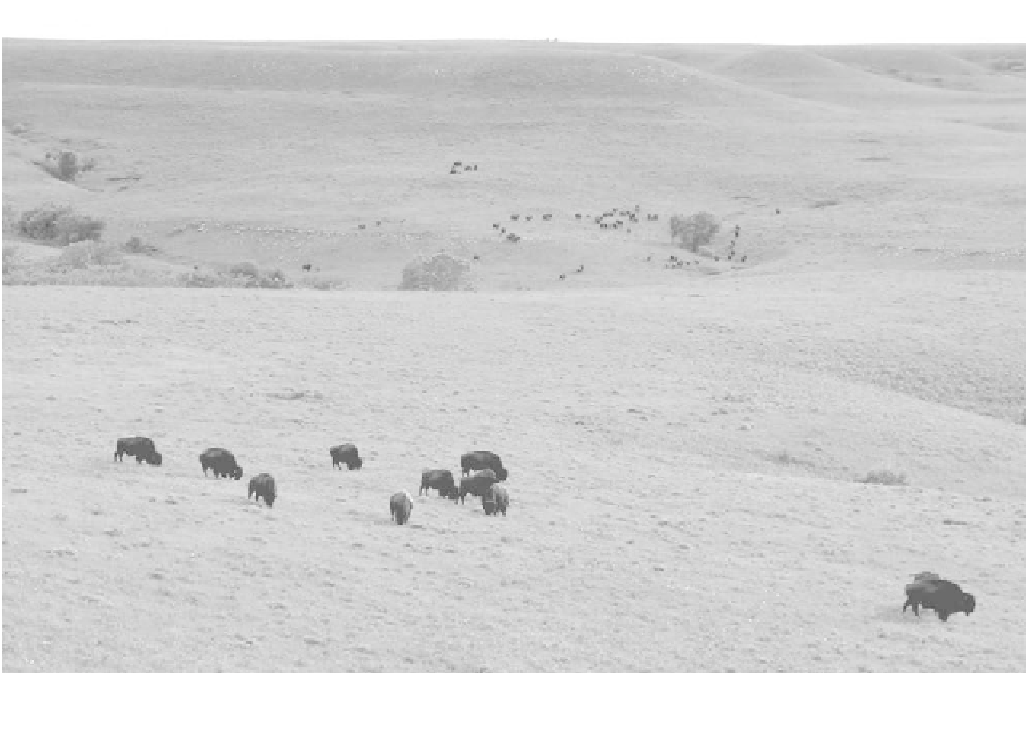Agriculture Reference
In-Depth Information
humans fill the animal role in all agroecosystems. But
there are many reasons why we shouldn't be the only
species in that role. As natural ecosystems demonstrate,
there is plenty of room in an agroecosystem for a variety
of animal species.
As we explore the ways in which reintegrating non-
human animals into crop-based agroecosystems can help
us achieve more sustainable food production systems, we
need to begin, as always, with natural ecosystems. They
show us how animals can enhance ecological integrity and
stability, rather than disrupting or degrading it.
The role that animals play in the structure and function
of natural ecosystems was discussed in some detail in
Chapter 2. Here, we review and expand on some of the
concepts presented there, with a view toward applying that
knowledge to the design and management of agroecosys-
tems that incorporate livestock animals.
the vegetation. Herbivorous animals are therefore key
components — and determinants — of the structural
makeup of most terrestrial ecosystems.
Because of the tight association between herbivores
and the plants they consume, many ecosystems show a
strong correlation between herbivore diversity and floral
diversity. For example, multispecies grazing by a diverse
ungulate fauna in the Serengeti of East Africa is intimately
connected to a striking richness in both predatory animals
and plants (McNaughton, 1985, 1990; Murray and Illius,
1996). Ten or more species of grazing ungulate may be
found in close proximity, with several species occurring
together in mixed groups. These herbivores eat different
plant species, different parts of plants (leaves, stems,
flowers), and plants in different life stages (green or dry);
in addition, because of migration cycles, they put their
herbivorous pressure on plants at different times of the
year. These variations in the dietary specialization of each
herbivore species coevolved with the vegetation, the com-
ponents of which followed diverse strategies for coping
with herbivory and for using it to minimize interspecific
competition with other plants. The resulting structural
diversity of the system allowed niche overlap, coexistence,
and mutualisms to evolve as well and contribute to further
diversity (Figure 19.2).
S
HAPING
V
EGETATION
As heterotrophic organisms in the trophic structure of an
ecosystem, herbivorous animals consume the biomass pro-
duced by plants, and this feeding behavior impacts the
abundance, distribution, and diversity of the plant species,
which in a terrestrial ecosystem are collectively termed
FIGURE 19.2
Bison grazing at Konza Prairie Biological Station, near Manhattan, Kansas.
Bison have been a key element in
shaping the prairie ecosystems of much of the Midwestern U.S. Photo courtesy of Catherine Burns.

Search WWH ::

Custom Search